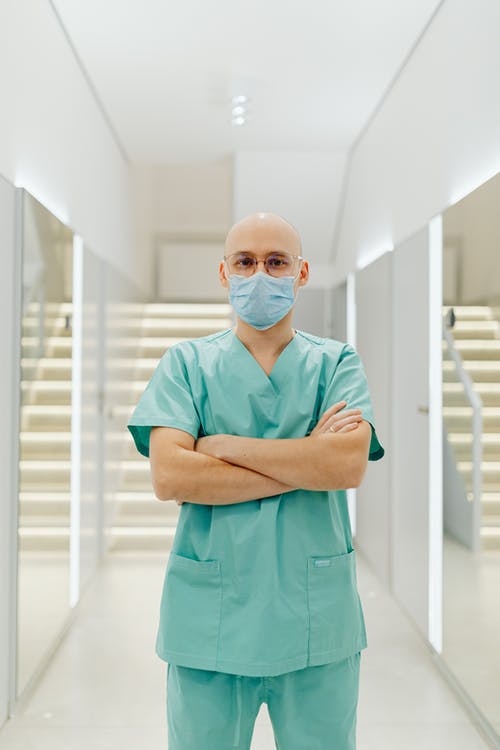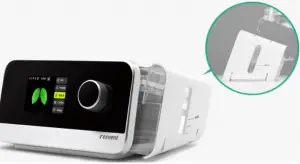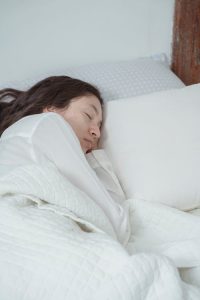Table of Contents
Sleep Apnea Test At Home
Obstructive sleep apnea syndrome (OSAS) is a disease with dangerous health consequences. You can suspect sleep apnea by regular loud snoring and daytime sleepiness.
But how many people are ready to see a doctor if the problem at first glance is only in the nocturnal guttural “trills”? And what percentage of them agree to stay overnight in a sleep laboratory and sleep under the supervision of specialists?
To diagnose OSAS and determine the severity of the disease, a simple medical consultation is not enough, a real examination is really necessary. The most accurate information about the patient’s condition during the night’s rest is provided by polysomnography. But the procedure is complicated and pricey.
The articles of APAP and CPAP Machines will help you to understand what is better for Sleep Apnea:
Check the Best CPAP&APAP Machine
Worldwide Sleep Apnea Statistics
A significant number of studies have been conducted on the prevalence of OSAS and its individual symptoms – snoring, daytime sleepiness, etc.
In 2022- 2022 studies, the prevalence of snoring in men ranged from 2.9% to 24.1%, in women – 5.4-13.8%, in the general population – 16.8%.
It was shown that the frequency of snoring in persons aged 75-79 years is only 1.3%
According to studies, the frequency of OSAS is, depending on age, in men – 0.4-9.1%, in women – 4.0-4.4%. In the general population, the frequency of OSAS is 0.2-1.1%. In older persons, the frequency of OSAS is significantly higher, 15-73%, in women, a lower incidence rate remains.
What is polysomnography?
With the help of polysomnography, the causes of insomnia and hypersomnia, narcolepsy (REM sleep disorder, manifested as increased sleepiness during the day or sudden sleep attacks) can be identified, and parasomnias can be diagnosed too.
Polysomnography makes it possible to diagnose respiratory disorders (sleep apnea), disturbances in the activity of the cardiovascular system, neurological disorders – involuntary movements of the limbs during sleep (restless legs syndrome), bruxism (involuntary movement of the chewing muscles that causes grinding of teeth during sleep), nocturnal epilepsy (muscle cramps during sleep or on awakening).
Well, polysomnography is a comprehensive sleep study that evaluates the many factors of your body’s performance over the course of an entire night. This study analyzes your breathing, the work of the heart, brain, snoring situation, apnea, sleep structure and phases, body position, blood oxygen saturation and many other parameters. It can be said that the polysomnography system is a whole “night laboratory”.
The diagnosis is as follows: You spend one night under the control of the diagnostic equipment at the hospital. Then the data is decrypted and analyzed by a specialist, after certain treatments and recommendations will be made, it depends on the problems identified.
Fortunately, there is an alternative method – cardiorespiratory monitoring. Ideally, it should also be performed in a sleep center under the supervision of a doctor. However, this test can be done at home.
Today, We will talk about the advantages and common problems of home diagnosis of sleep apnea, and also note the situations when examination in a laboratory is indispensable.
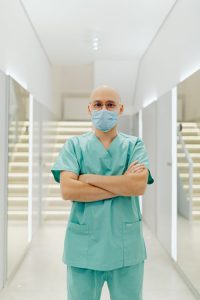 Sleep Apnea Test At Home” width=”200″ height=”300″ srcset=”https://selfhealthpharmacist.com/wp-content/uploads/2021/11/pexels-photo-6627919-200×300.jpeg 200w, https://selfhealthpharmacist.com/wp-content/uploads/2021/11/pexels-photo-6627919.jpeg 500w” sizes=”(max-width: 200px) 100vw, 200px” title=””>
Sleep Apnea Test At Home” width=”200″ height=”300″ srcset=”https://selfhealthpharmacist.com/wp-content/uploads/2021/11/pexels-photo-6627919-200×300.jpeg 200w, https://selfhealthpharmacist.com/wp-content/uploads/2021/11/pexels-photo-6627919.jpeg 500w” sizes=”(max-width: 200px) 100vw, 200px” title=””>
Sleep Apnea Test At Home
The indications for Home Apnea Test or Polysomnography.
The indications for Home Apnea Test or Polysomnography are the following:
- Complaints of snoring or respiratory arrest during sleep. Respiratory arrest – obstructive sleep apnea syndrome – can be observed with pathologies of the ENT organs (such as adenoids, polyps, tonsillitis, curvature of the nasal septum);
- Excessive motor activity during sleep (frequent changes in body position, involuntary movements of the limbs, etc.)
- Sleep disorders: difficulty falling asleep, decreased overall sleep duration and quality.
- Excessive daytime sleepiness, decreased concentration, rapid fatigue.
- Night terrors, sleepwalking, dreaming, teeth grinding in sleep; depressive disorders.
What is a home apnea test?
For home testing, you will need special equipment, which is provided by many sleep centers after prior consultation with a specialized doctor. The provided devices allow you to obtain a protocol of the examination result in an automatic mode. But without checking the data of automatic analysis by a specialist, without taking into account the patient’s condition and his medical history, the reliability of the diagnosis can be extremely low.
For examination, sensors will be attached to the patient’s body, which make it possible to determine:
- The nature of the air flow during breathing;
- The presence of snoring;
- Chest movement;
- Fluctuations in the level of oxygen in the blood;
- Pulse rate or electrocardiogram;
- Change in position, as well as body movement (this function is not characteristic of all equipment models and does not mandatory).
The data obtained from home testing must be processed and analyzed by an expert in respiratory sleep medicine.
How to prepare for a Sleep Apnea Test at Home?
- Avoid naps on the day of the study.
- Avoid alcohol, caffeine (coffee, tea, and cola), sedatives, stimulants the day before your polysomnography, unless directed otherwise by your doctor.
- On the day of your procedure, make sure your hair is free of oil, varnish and other cosmetic products.
- Take any medication you need (if prescribed).
- If you are using positive airway pressure therapy, be sure to use your device.
The Benefits of Sleep apnea test Home
When comparing testing in a sleep laboratory and at home, it is easy to name the benefits of the latter option for the patient.
Price. The cost of the study is one of the first issues of concern to patients with suspected OSAS. The cost of a home test is usually two or even three times less than the price of a laboratory polysomnography.
Comfort . The very thought that you are not spending the night at home, and someone is watching you sleep, can seem strange and unpleasant. Therefore, home testing is much more comfortable, because you are in your own bed and are not ashamed of anyone. Moreover, it is not at all difficult to use such a device: you will be instructed in detail before the examination.
Convenient time planning. With a home examination, you choose when to start the test. You do not have to adjust to the work schedule of doctors or other patients who are being examined in the laboratory before or after you.
Ideal for patients with severe OSAS. As a rule, in such patients, cardiorespiratory equipment easily records multiple episodes of apnea and the examination result is practically no different from that obtained from them during polysomnography.
Problems caused when having Sleep Apnea Test at Home
Home testing is inferior in accuracy to polysomnography and even cardiorespiratory monitoring, but carried out in a laboratory setting. Let’s list the main problems that prevent the method from becoming the leading one in the field of OSAS diagnostics.
Limited diagnostic potential. Home screening, by definition, involves recording the minimum required number of parameters and therefore is not suitable for patients with atypical symptoms when the diagnostic concept is initially unclear. Such obscure and incomprehensible patients are referred for polysomnographic examination to clarify the diagnosis.
Incomplete information on sleep disorders. Home cardiorespiratory testing does not provide an objective assessment of the sleep process. During screening, only breathing parameters, blood oxygen levels and cardiac activity are monitored. Lack of distinction between sleep and wakefulness. So if, along with complaints that suggest sleep apnea, the patient is worried about chronic insomnia, then this is an undeniable candidate for polysomnography.
Errors due to incorrectly positioned sensors. There is nothing difficult in fixing the sensors on your body yourself. Nevertheless, errors due to the installation of sensors in the wrong place and in the wrong place, happen quite often, and this distorts the results of the study.
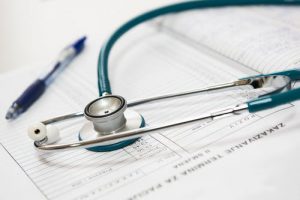 Sleep Apnea Test At Home” width=”300″ height=”200″ srcset=”https://selfhealthpharmacist.com/wp-content/uploads/2021/11/medical-appointment-doctor-healthcare-40568-300×200.jpeg 300w, https://selfhealthpharmacist.com/wp-content/uploads/2021/11/medical-appointment-doctor-healthcare-40568.jpeg 500w” sizes=”(max-width: 300px) 100vw, 300px” title=””>
Sleep Apnea Test At Home” width=”300″ height=”200″ srcset=”https://selfhealthpharmacist.com/wp-content/uploads/2021/11/medical-appointment-doctor-healthcare-40568-300×200.jpeg 300w, https://selfhealthpharmacist.com/wp-content/uploads/2021/11/medical-appointment-doctor-healthcare-40568.jpeg 500w” sizes=”(max-width: 300px) 100vw, 300px” title=””>
Sleep Apnea Test At Home
Some Advice when having Sleeping Apnea Test at home
Despite all the nuances, home sleep apnea monitoring is becoming an increasingly popular and widespread method for diagnosing OSAS. We offer several recommendations, following which you can increase the reliability of the survey results.
1.Be as honest as possible with your healthcare provider. Tell healthcare professionals about medical conditions that may be affecting your breathing while you sleep. The information will help you determine if home testing is right for you or not.
2.Talk to your spouse about how you sleep. After collecting information about your behavior during the night rest, pass it on to a specialist. Maybe there is another disease in which there is no point in doing cardiorespiratory screening
3.Follow the instructions provided by your hardware vendor carefully.
4.Ask your spouse to help you with the test. Your partner can attach sensors to your body and turn on the equipment when you fall asleep. This will make the research results more accurate.
5.Do not use body sprays and creams before screening, remove the polish from the nail on the finger where the oxygen sensor will be attached. This can reduce the reliability of equipment fastening, deteriorate the sensitivity of the sensors and, as a result, distort the result.
6.Avoid alcohol and caffeine before bed. Alcoholic and caffeinated beverages increase the manifestations of various sleep disorders.
7/Stick to your normal daily routine. Don’t schedule your home test at night, when you have to go to bed later than usual, or before important or exciting events. You must choose a night that will be free of unnecessary stress and worries, and will be as similar as possible to everyone else.
8.Cardiorespiratory monitoring in contrast to polysomnography, is a more affordable method for diagnosing OSAS – both in terms of cost and in terms of the availability of the necessary equipment in medical centers.
However, when choosing between home and laboratory testing, we would recommend looking at your healthcare provider’s opinion. Yes, sleeping in a hospital room for some people involves a certain level of discomfort. you will not have to sleep at home.
On the other hand, control by experienced specialists over the course of the study allows obtaining more reliable information about the nature of respiratory disorders, and, consequently, prescribing more effective treatment for snoring and sleep apnea.
What Treatments can be offered after a sleep apnea test at home?
For mild apnea, it is usually sufficient to lose weight and not sleep on your back. If you regularly drink alcohol in the evenings, it is sometimes sufficient to give up alcohol. If nasal breathing is severely disturbed, surgery may be necessary.
In mild to moderate forms of obstructive sleep apnea, therapy using special protrusion splints that push the lower jaw forward can be successful.
In severe forms of sleep apnea, therapy with the use of special devices is inevitable.
Check the Best CPAP&APAP Machine
CPAP (ContinuousPositiveAirwayPressure) and BiPAP (Bi-LevelPositiveAirwaysPressure) devices are equipped with a compressor, which is connected by a hose to a face mask.
Check the Best BiBAP Machines
The mask creates a slightly increased pressure during sleep – 7-12 millibars. This pressure prevents airway obstruction and thus apnea and hypopnea. At the same time, the device relieves the patient from snoring. The BiPAP device generates high inspiratory pressures and low expiratory pressures
Cancellation of these treatment machines (even if it was carried out for several years) does not entail any complications, except for the gradual return of the original symptoms.
The use of the device does not cure a person, but ensures normal sleep, an improvement in the quality of life and the prevention of serious complications. Even very sick patients can feel a significant improvement in their well-being within a few days.
This therapeutic method is called the pneumatic splint method. Currently, there are various options for masks for different types of faces.
With successful therapy, the symptoms of sleep apnea disappear and sleep returns to normal. In some cases, the symptoms of concomitant diseases, for example, hypertension and diabetes mellitus, improve.
Consequences of sleep apnea if not treated
If sleep apnea is left untreated, it might have the following effects
- Increased daytime sleepiness, which can lead to traffic accidents or industrial accidents. In children, this will lead to academic failure;
- Health problems: hypertension, diabetes, stroke, arrhythmia, cardiomyopathy, heart failure, heart attack, or obesity.
